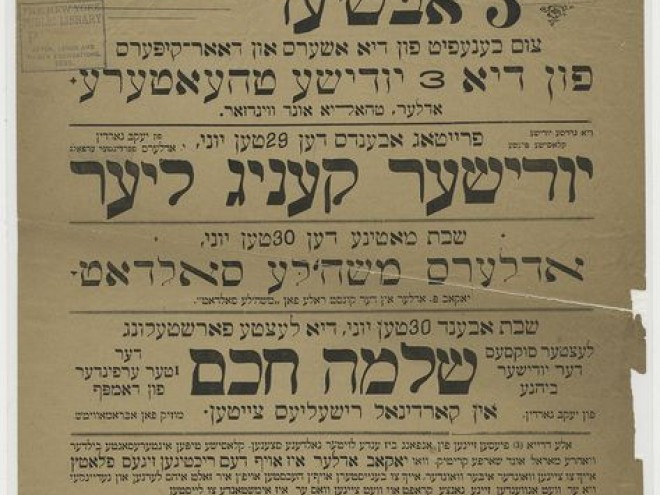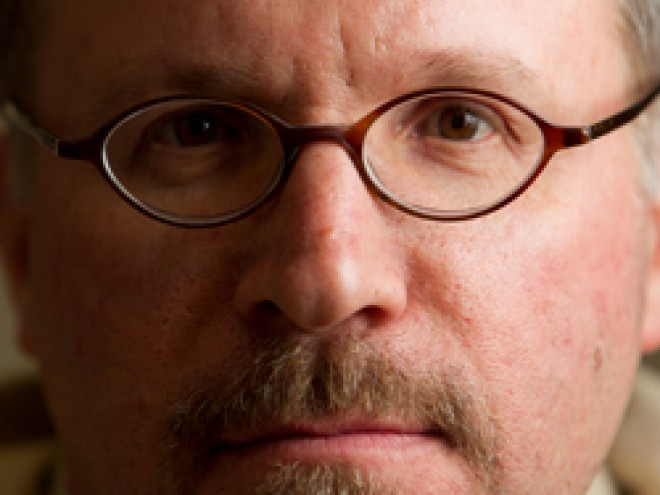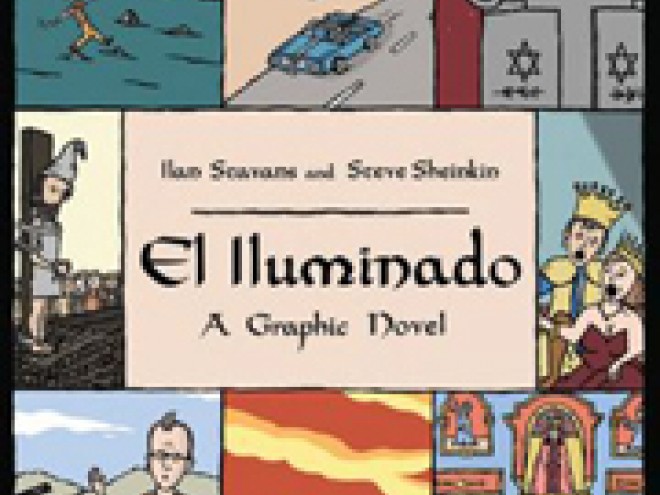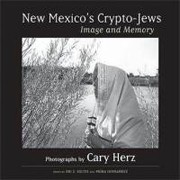A death in the desert…missing documents…a stubborn priest…a persistent young woman grieving the loss of her cousin and trying to solve his death…Jewish symbols showing up in mysterious places…is this the plot of the latest Indiana Jones movie? Not quite, but maybe something even better.
The new graphic novel by well-known literary critic Ilan Stavans and graphic novelist Steve Sheinkin packs a punch that is at once a gripping whodunit and a fascinating lesson on crypto-Jews in New Mexico. When Stavans, appearing as a central character in his own book, is invited to Santa Fe to give a lecture, he unwittingly gets drawn into the middle of a murder mystery with origins that stretch back to the Spanish Inquisition and the Jews who fled first to Mexico and then to New Mexico. Irina, a young local woman prone to speaking Spanglish, enlists Stavans’s help in piecing together clues that might explain the strange circumstances surrounding the death of her cousin, Rolando. Stavans quickly learns that Rolando had been obsessed with the story of Luis de Carvajal the Younger, also known as “El Iluminado,” a crypto-Jew who lived in Mexico in the sixteenth century. Carvajal was persecuted and then killed for not renouncing his Jewish roots.
Irina discovers that Rolando had documents that could possibly prove their family’s connection to Carvajal. Rolando’s brother is a priest, and he refuses to accept the fact that his family could be Jewish. Rolando died protecting the family secret, and as Irina and Stavans search for the truth, they encounter a cast of interesting characters all seeking answers to questions about identity, religion, and their place in history. The story is fast-paced and fascinating, with a delightful blend of history and humor. Sheinkin’s illustrations are immediately recognizable to fans of his Rabbi Harvey series, and his choice of colors and attention to details result in a beautifully entertaining book that will surely become a classic.
Read Ilan Stavan’s Posts for the Visiting Scribe
Fate Knocking at the Door: An Interview with Ilan Stavans
Philip K. Jason: What binds your interest in comic strips and graphic novels on the one hand and more traditional critical explorations on the other?
Ilan Stavans: Storytelling is a form of midrash. I love telling stories, analyzing them, seeing them in context. I grew up in a culture that juxtaposed the word and the image. As a writer, I don’t see one as superior to the other. I also don’t see the distinction between highbrow and popular readerships. The capacity to enthrall knows no boundary.
PKJ: Prof. Stavans, as a character in your graphic novel El Iluminado (Basic Books, 2012), is directly involved in a real world adventure. What do you say to those who feel that people in academic life somehow have removed themselves from real world experiences?
IS: For me the noun academic is derogatory: it denotes affectation, posturing, pretense. Academic life is shamefully aloof, removed from the nuts-and-bolts affairs of daily Americans. I feel uncomfortable with such elitism: I prefer to get my hands dirty, to delve into the frying pan.
PJK: Tell me something about the background of the family name.
IS: In vain I’ve sought my roots in nineteenth-century Europe. My consolation is the knowledge that my ancestors have roots in the Pale of Settlements, although I don’t know how deep those roots are. My full name (oy gevalt!) is Ilan Kalmen Stavchansky Slomianski Altchuler Eisenberg. Stavchansky probably refers to Stavchany, in the Ukraine. My father, Abraham Stavans, a stage and soap-opera actor in Mexico, shortened the name for artistic reasons, although he never made the move to change it officially. I chose Ilan Stavans to emphasize my debt to him. I discuss this debt in my memoir On Borrowed Words (Penguin, 2002).
PKJ: One of your concerns in Singer’s Typewriter and Mine: Reflections on Jewish Culture (Nebraska, 2012) is about the future of ethnic identities in “melting pot nations” versus “fruit salad” nations. You discuss this in your new book The United States of Mestizo (NewSouth, 2013), which is based on an article you published in Humanities. Can public policy or private advocacy lead to one or another outcome in heterogeneous societies?
IS: The United States is a gorgeous mosaic of ethnicities. Regardless of policy, the nation’s future is Babel-like: a sum of parts. I’m an American because I chose to immigrate to it in 1985. That is, I chose to become a convert to the religion we call “America,” to become a practitioner, to support, for better or worse, its principles.
PKJ: Am I safe to assume that, in your opinion, translation is a term with multiple meanings, going beyond the attempt to render a text composed in one language into another? You’ve translated Pablo Neruda, Borges, and Juan Rulfo from the Spanish into English, Singer from Yiddish to Spanish, Yehuda ha-Levi and Yehuda Amichai from Hebrew to English, Shakespeare, Emily Dickinson, and Elizabeth Bishop from English to Spanish. You’ve also written frequently on the role of translation in the shaping of nations.
IS: For me translation is a way of life. In fact, I live in translation without an original.
PKJ: What do you mean?
IS: In traveling from one language to another, I no longer know if there is a right way of saying things or many right ways.
PKJ: One of your life-long interests is Spanglish. You’ve published a dictionary (Harper, 2003) as well as a translation of Don Quixote of La Mancha into Spanglish. Does Spanglish have its correlatives in other language blends? In Yiddish or Hebrew blends? How and for whom do these hybrids function?
IS: Spanglish is the new Yiddish: a mix of Spanish and English used by Latinos to communicate across national, ethnic, and economic lines. Like Yiddish, it was looked down upon by the educated elite as bastardization. Then writers embraced it as theirs, producing novels, theater, music, poetry, hence giving it an incipient standardized syntax. It is spoken by millions not only in the United States but across the Americas. Just as there is a difference between the Yiddish spoken, say, by Litvaks and Galitzianers, Cubans, Puerto Ricans, Mexicans, Dominicans and others each have their variety of Spanglish.
As for Hebrew, its intercourse with Arabic, called Hibriya, is an essential component of Arab-Jewish culture today, which I reflect on in Resurrecting Hebrew (Schocken/Nextbook Press, 2008). This so-called border language fits a pattern that also includes Portuñol (Portuguese and Spanish), Franglais (French and English), Chinglish (Mandarin and English), and so on.
PKJ: You are attracted to brainstorming with a partner and transcribing those discussions into published conversations. The topics are the Bible, the concept of love through history, ways of seeing art, and so on. These dialogues have been published by university presses like Yale, Texas, Duke, Michigan, and Wisconsin. They have also been translated into several languages. What is the attraction? How do you set up and energize these conversations?
IS:The art of the conversation is as old as humankind. Modern times have devalued it, turning it into a bite-size promotional tool. Of course, there’s much more to it: two minds in a tete-a-tete, what is Socrates, the father of us all, about?
Delving into a subject with a companion is among the most rewarding pleasures in life, not to say in literature. The conversations — real or imagined — Isaac Bashevis Singer had with Richard Burgin, Kafka with Gustav Janouch, Borges with his friend Ernesto Sábato, are, in my eyes, genuine jewels. They open a unique window into the minds of the conversants.
I love talking to people. These talks, transcribed by friends, often end up in magazines. But I also enjoy longer exchanges, which take a year, sometimes more. I’ve done several of them myself with historians (Iván Jaksic), journalists (Mordecai Drache), translators (Verónica Albin), philosophers (Jorge Gracia), et al., and no doubt I’m humbler as a result. These encounters generally start during a pleasant dinner. If and when the chemistry is right, the dialogue eventually settles on a specific subject, becoming its center of gravity. Then the conversation continues via e‑mail: the mutual desire is to be thorough, to understand things as comprehensively as possible. Sooner or later I mention the exchange to an editor friend, who then suggests turning it into a book. If I follow that route, the dialogue acquires the form of a manuscript, which is sent electronically back and forth countless times until every aspect of the subject has been addressed. What I like about these exchanges is their spontaneity, their jazzy nature… To me they feel like fate knocking at the door.





